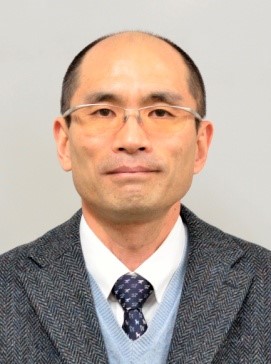訪日学者ミニシンポジウム
台湾 国立清華大学 化学工程学系 Hsin-Lung Chen先生とカナダ McMaster大学 Faculty of Science, Physics & Astronomy, An-Chang Shi先生をお招きしました。
そのほか日本の研究者3名を加えてミニシンポジウムを開催します。
今回は、高分子(ブロック共重合体)の自己組織化構造(ナノスケールの構造)に関したそれぞれの先生方の最近の研究テーマ(実験と理論)をご紹介頂きます。
奮ってご参加ください。
2023年7月24日 9:30-14:00 @ラーニングコモンズ (NITech Hall 2F)
(正門を入って右手の建物)
問い合わせ先 生命・応用化学科・山本勝宏:yamamoto.katsuhiro@nitech.ac.jp
Program (tentative)
24th(Mon.), July 2023, Learning Commons NITech Hall 2F
(Building on the right after entering the main gate)
(Building on the right after entering the main gate)
09:30 Opening
09:40 - 10:30 Prof. Hsin-Lung Chen, National Tsing Hua University
Complexity of the Spherical Phase of Block Copolymer
10:30 - 11:00 Dr. Mikihiro Hayashi, Nagoya Institute of Technology
Some Physical Features of Bond Exchangeable Cross-Linked Materials
11:00 - 11:30 Prof. Takashi Uneyama, Nagoya University
Highly Coarse-Grained Molecular Models for Symmetric Diblock Copolymers
11:30 - 12:30 Break (Lunch Time)
12:30 - 13:00 Prof. Atsuhi Takano, Nagoya Univerity
Molecular Weight Dependence of Lamellar/Gyroid Domain Spacings of Symmetric ABC Triblock Terpolymers
13:00 - 13:50 Prof. An-Chang Shi, McMaster University
Regulating the Self-assembly of Block Copolymers via Dispersity
Abstract
Prof. Hsin-Lung Chen, Dept.of Chemical Engineering, National Tsing Hua University, Hsinchu, Taiwan
 Microphase separation of block copolymer (BCP) can generate spherical micelles at large compositional asymmetry. Like the colloidal particles, the interaction between the micelles, which is usually repulsive in nature, leads to their organization into long-range ordered lattices. The selection of the stable packing lattice of BCP micelles is a complex problem, because the micelles are deformed into the polyhedra to attain uniform segmental density. In this case, the free energy of the intermicellar interaction determined by the contact area between the micelles is coupled with the intramicellar free energy; both are dependent on the geometry of the deformed micelles determined by the packing lattice. The lattice structure neat BCP has been found to include not only the canonical lattices such as the commonly observed body-centered cubic (BCC) and the rarely observed close-packed lattices, but also the low-symmetry phases such as the Frank-Kasper (FK) phase and quasicrystal. In this lecture, I will present our recent findings of the complexity of the spherical phase of BCP beyond the classical BCC phase, including: (1) emergence of a lattice entropy-stabilized BCC phase; (2) thermally reversible variation of the extent of stacking fault in HCP phase; hinting the thermodynamic nature of stacking fault in soft colloids; (3) the emergence of Laves C14 phase in the fuzzy colloid regime, highlighting the significance of size dispersity of micelles for the formation of the low-symmetry phase.
Microphase separation of block copolymer (BCP) can generate spherical micelles at large compositional asymmetry. Like the colloidal particles, the interaction between the micelles, which is usually repulsive in nature, leads to their organization into long-range ordered lattices. The selection of the stable packing lattice of BCP micelles is a complex problem, because the micelles are deformed into the polyhedra to attain uniform segmental density. In this case, the free energy of the intermicellar interaction determined by the contact area between the micelles is coupled with the intramicellar free energy; both are dependent on the geometry of the deformed micelles determined by the packing lattice. The lattice structure neat BCP has been found to include not only the canonical lattices such as the commonly observed body-centered cubic (BCC) and the rarely observed close-packed lattices, but also the low-symmetry phases such as the Frank-Kasper (FK) phase and quasicrystal. In this lecture, I will present our recent findings of the complexity of the spherical phase of BCP beyond the classical BCC phase, including: (1) emergence of a lattice entropy-stabilized BCC phase; (2) thermally reversible variation of the extent of stacking fault in HCP phase; hinting the thermodynamic nature of stacking fault in soft colloids; (3) the emergence of Laves C14 phase in the fuzzy colloid regime, highlighting the significance of size dispersity of micelles for the formation of the low-symmetry phase.
Prof. An-Chang Shi, Dept. of Physics and Astromony, McMaster University, Hamilton, Ontario, Canada
 Dispersity is an intrinsic feature of all synthetic polymers. While commonly viewed as an annoyance, in many cases dispersity could be beneficial to the properties of polymeric materials. For block copolymers, previous studies have showed that dispersity could have significant effects on their phase behaviour. Besides shifting the phase boundaries of block copolymers, dispersity could be used to regulate the emergence and stability of various ordered phases. For the case of diblock copolymers, theoretical studies based on the self-consistent field theory have demonstrated that dispersity of the polymers could enlarge the stability region of the complex spherical packing phases such as the Frank-Kasper sigma phase. Furthermore, dispersity with designed length distributions could stabilize ordered phases that are metastable for the neat block copolymers. Specifically, bidisperse diblock copolymers in the form of binary blends of AB diblock copolymers could stabilize the Laves (C14 and C15) and the double diamond phases. Recent theoretical and experimental progresses and possible future research directions on this fascinating topic will be summarized and discussed.
Dispersity is an intrinsic feature of all synthetic polymers. While commonly viewed as an annoyance, in many cases dispersity could be beneficial to the properties of polymeric materials. For block copolymers, previous studies have showed that dispersity could have significant effects on their phase behaviour. Besides shifting the phase boundaries of block copolymers, dispersity could be used to regulate the emergence and stability of various ordered phases. For the case of diblock copolymers, theoretical studies based on the self-consistent field theory have demonstrated that dispersity of the polymers could enlarge the stability region of the complex spherical packing phases such as the Frank-Kasper sigma phase. Furthermore, dispersity with designed length distributions could stabilize ordered phases that are metastable for the neat block copolymers. Specifically, bidisperse diblock copolymers in the form of binary blends of AB diblock copolymers could stabilize the Laves (C14 and C15) and the double diamond phases. Recent theoretical and experimental progresses and possible future research directions on this fascinating topic will be summarized and discussed.
Dr. Mihihiro Hayashi, Dept. of Life Science & Applied Chemistry, Nagoya Institute of Technology, Japan
 Vitrimers are a new class of cross-linked materials that are capable of network topology alternation through the associative dynamic bond-exchange mechanism, which has been recently invented to solve the problem of conventional cross-linked materials, such as poor recyclability and healability. Thus far, the concept of vitrimers has been applied to various polymers. In this presentation, we describe some physical features of vitrimers, and also our recent invention of preparation technique, relying on chain decomposition and bond exchange, aimed for true practical application of the vitrimer concept
Vitrimers are a new class of cross-linked materials that are capable of network topology alternation through the associative dynamic bond-exchange mechanism, which has been recently invented to solve the problem of conventional cross-linked materials, such as poor recyclability and healability. Thus far, the concept of vitrimers has been applied to various polymers. In this presentation, we describe some physical features of vitrimers, and also our recent invention of preparation technique, relying on chain decomposition and bond exchange, aimed for true practical application of the vitrimer concept
Prof. Atsuhi Takano, Dept. of Molecular & Macromolecular Chemistry, Nagoya University, Japan
 The molecular weight dependence of lamellar/gyroid domain spacings of symmetric isoprene-styrene-2-vinylpyridine (ISP) triblock terpolymers in bulk was measured by means of small-angle X-ray scattering, and compared with SCFT results for ABC triblock terpolymers.
The molecular weight dependence of lamellar/gyroid domain spacings of symmetric isoprene-styrene-2-vinylpyridine (ISP) triblock terpolymers in bulk was measured by means of small-angle X-ray scattering, and compared with SCFT results for ABC triblock terpolymers.
Dr. Takashi Uneyama, Dept. of Physical Science & Engineering, of Nagoya University, Japan
 Coarse-grained models are useful to study various properties of block copolymers. We show coarse-grained molecular models in which a symmetric diblock copolymer is modelled as a dumbbell. Both static and dynamic properties can be qualitatively reproduced by simulations based on the coarse-grained models.
Coarse-grained models are useful to study various properties of block copolymers. We show coarse-grained molecular models in which a symmetric diblock copolymer is modelled as a dumbbell. Both static and dynamic properties can be qualitatively reproduced by simulations based on the coarse-grained models.

